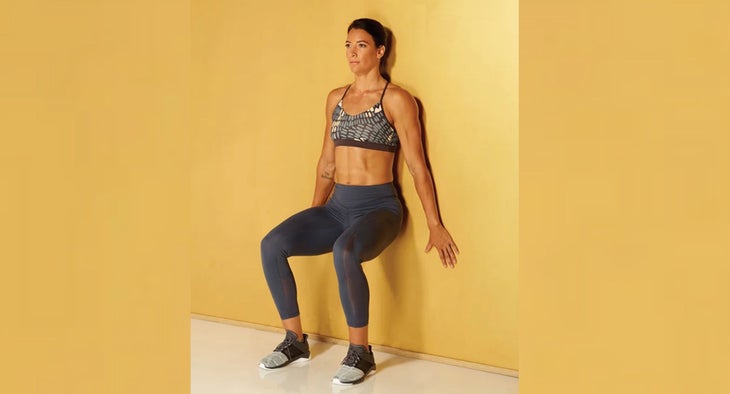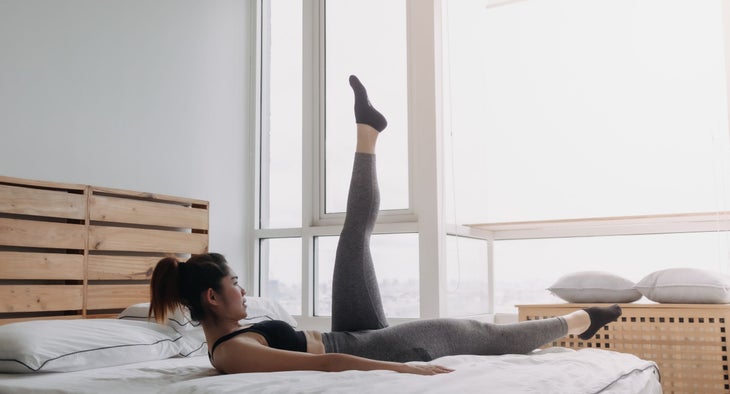Heading out the door? Read this article on the new Outside+ app available now on iOS devices for members! Download the app.
Whether you’re an off-road junkie, pavement pounder or treadmill addict, chances are you’ve experienced sore knees. All that high-impact activity doesn’t necessarily wear down your cartilage, however. Runner’s knee — one of the most common ailments to affect runners and athletes — is felt as pain on the back of the kneecap due to improper patellar tracking.
If achy, wonky knees have been sidelining your workouts, the trick may be to simply get yourself back in line.
Heads Up
“Generally, this injury heals in about four weeks,” says Lewis Maharam, MD, FACSM, medical director of the Leukemia & Lymphoma Society’s Team in Training Program and former medical director of the New York Road Runners Club and the New York City Marathon. “The good news is that if you get a good orthotic and strengthen the medial quads, you can smooth out the back of the kneecap and heal yourself. This injury doesn’t require surgery.”
Tight illiotibial bands can also affect the tracking of the kneecap. Be sure to stretch this area properly after your workouts.
Limit your time in high heels, especially when healing because you may rock and pronate more easily, which can move your kneecap offline.
Ask The Expert
What causes runner’s knee?
There are two primary causes. The first is over-pronation — when your push-off isn’t straight and comes off the inside of your foot, causing your kneecap to go offline. The second main cause is weak medial quadriceps muscles (vastus medialis oblique). Both issues prevent the kneecap from traveling in the middle of the groove.
What are the most common signs?
Aside from achiness under your kneecap, your knee will bother you when climbing up and down stairs — thought more so when you walk down stairs. When you go down stairs, the quad contracts and makes the knee grind. Also, if you sit for long periods of time, you might develop “movie theater syndrome” — fluid can leak out into the joint because the back of the kneecap is worn down. It’s a tight space, so the leaked fluid can make your knee feel extremely stiff.
How can active women prevent it?
First, you should see a sports medicine specialist to see if you’re an over-pronator. Purchase a flexible, full- length orthotic to control the forefoot and the push off.
There are also certain workouts/mobility work that can strengthen your knees, therefore protecting you from potential injury.
Step Up

Do three sets of 12–15 reps to help strengthen your knees. Do not do this move if you have already sustained a knee injury.
Target Muscles: gluteus maximus
Setup: Stand facing a bench or step while holding dumbbells at your sides. Step your left leg up, centered on top of the bench.
Action: Stand up by strengthening your left leg and bring your right foot up to touch the side of the bench. Hold for a second and then slowly lower yourself back to the start position and repeat. Complete the set and switch sides.
Wall Sit

Do three sets of 30-60 seconds.
Target Muscles: quadriceps, glutes, hamstrings, and calves
Setup: Stand upright against a wall with the back pressed flat against the wall.
Action: Bend the knees and lower the hips to slide down the wall until your thighs are parallel with the ground. Your knees should be above your ankles and bent at right-angles.
Leg Raise

Do three sets of 12 reps on each leg.
Target Muscles: lower and upper abs, hamstrings, quadriceps, hip flexors, and lower back muscles
Setup: Lay with your back pressed to the floor.
Action: Bend one knee and place your foot flat on the floor. Keeping the other leg straight, raise it to the height of the opposite knee.